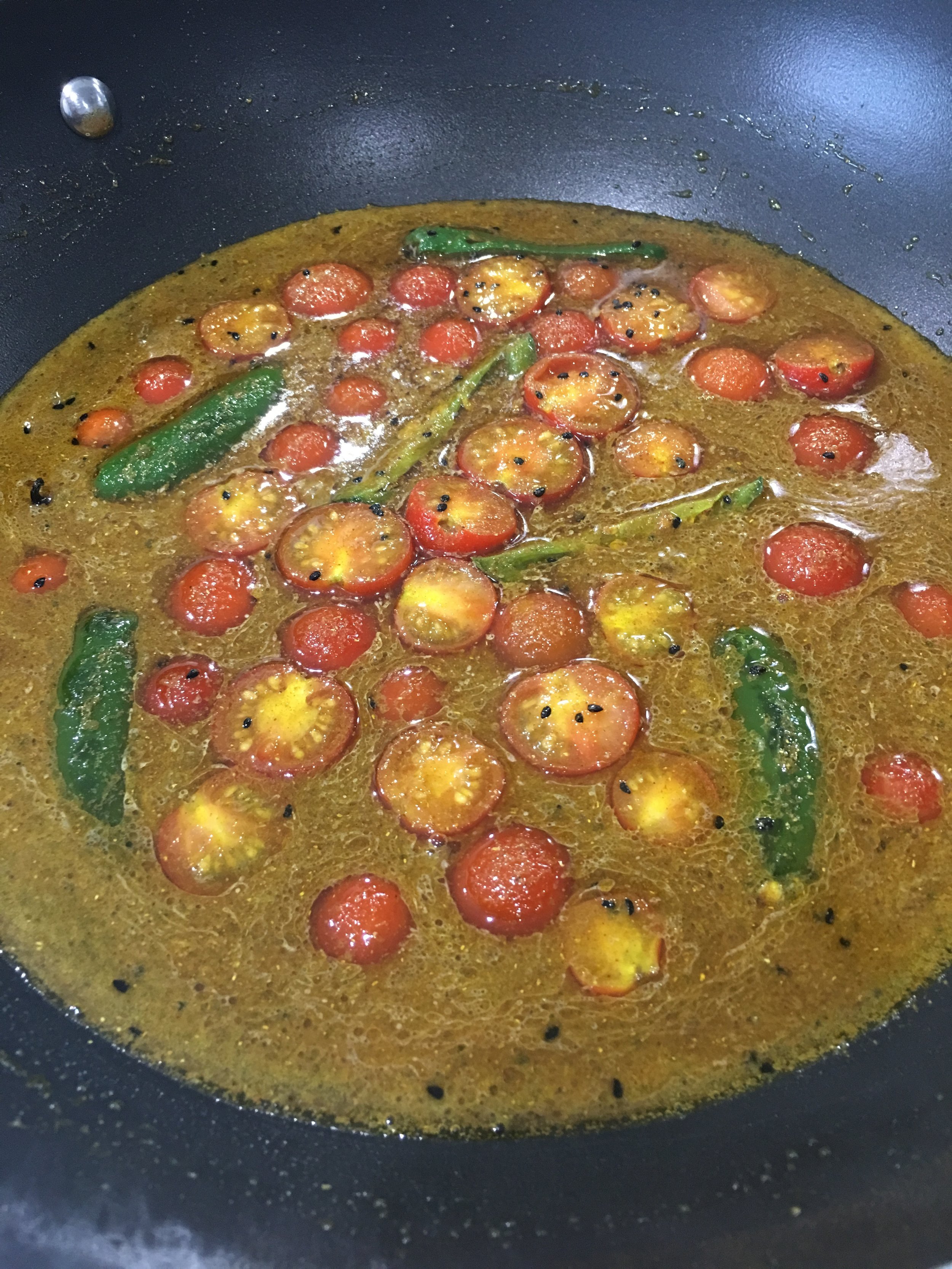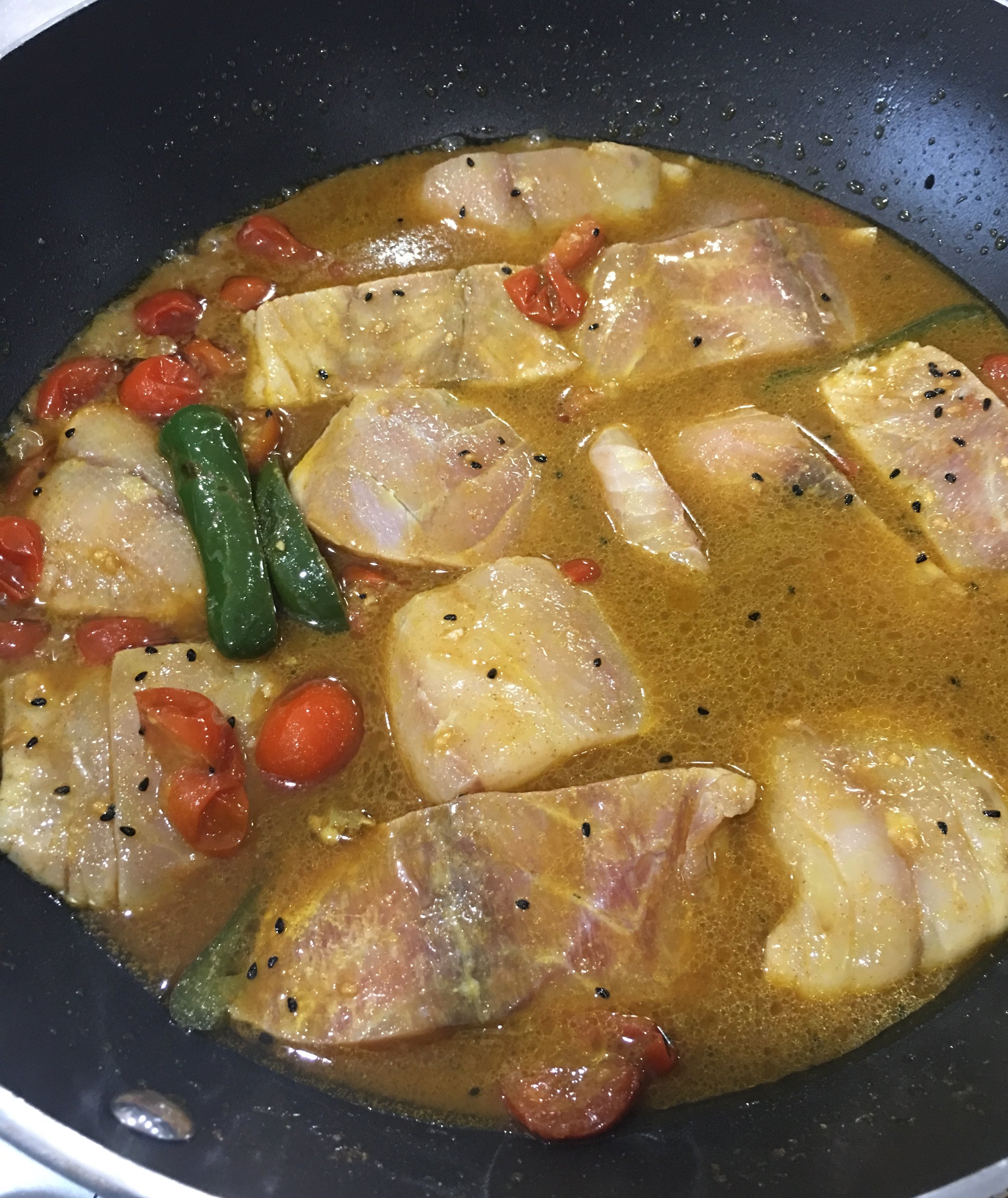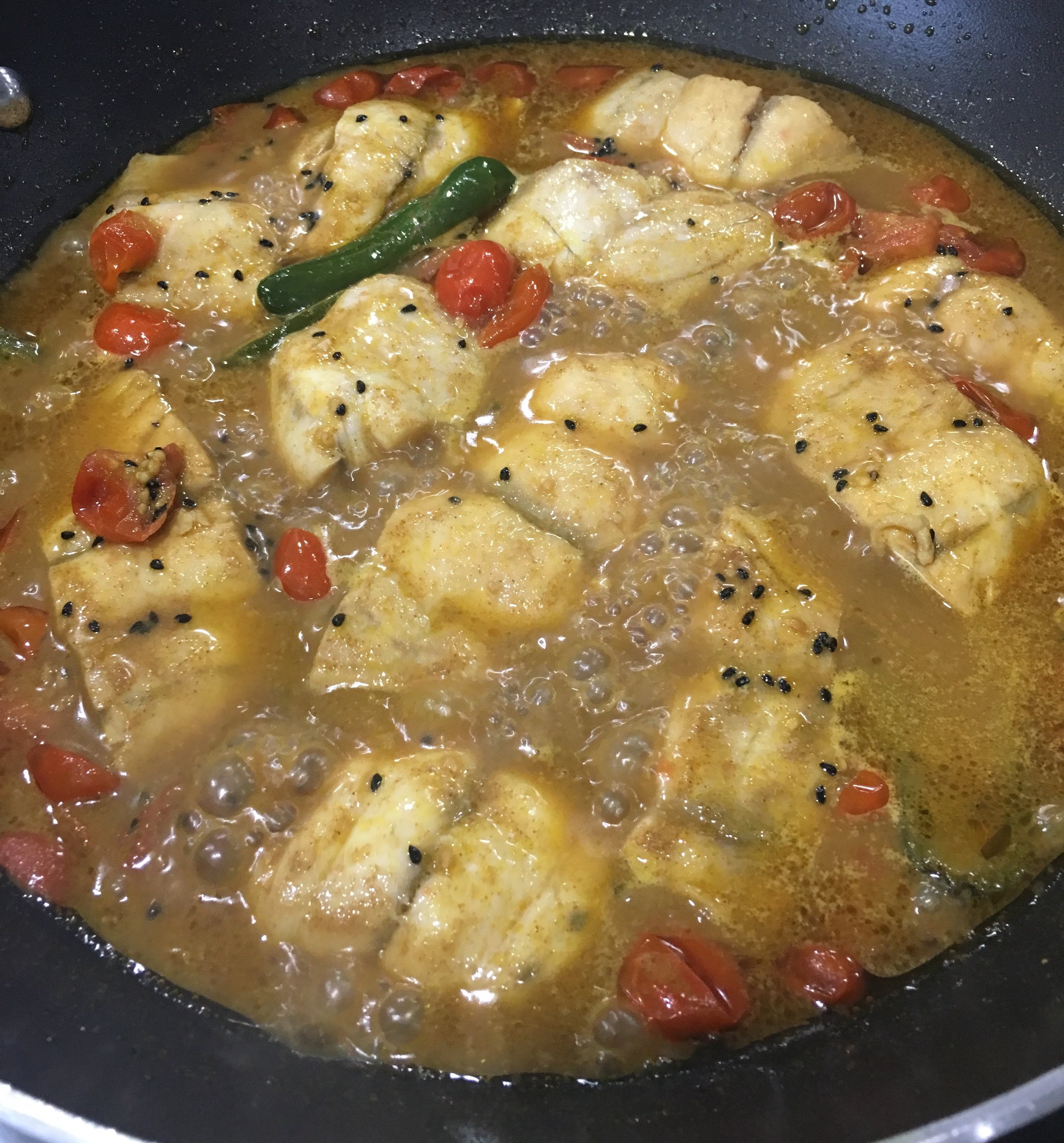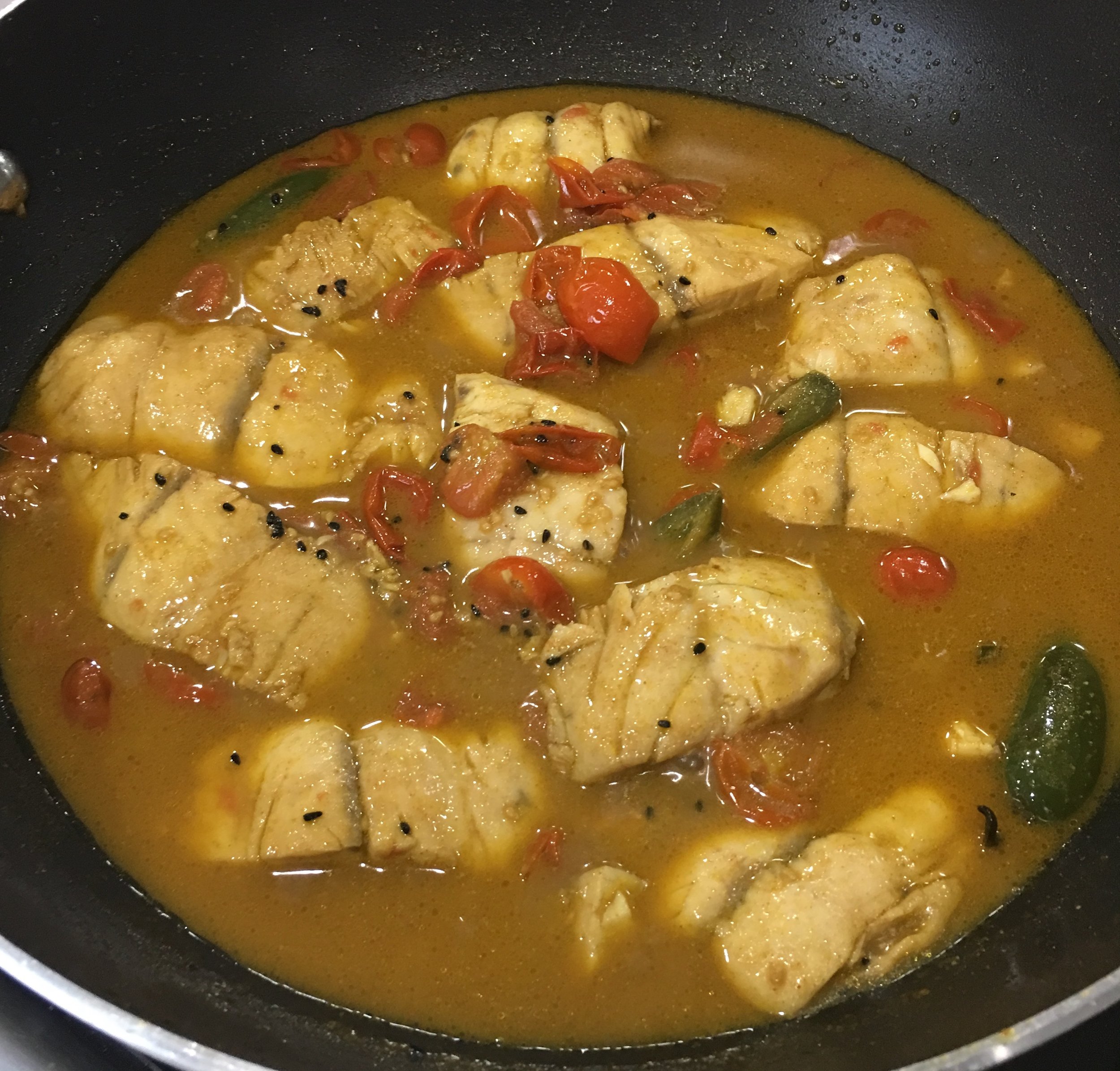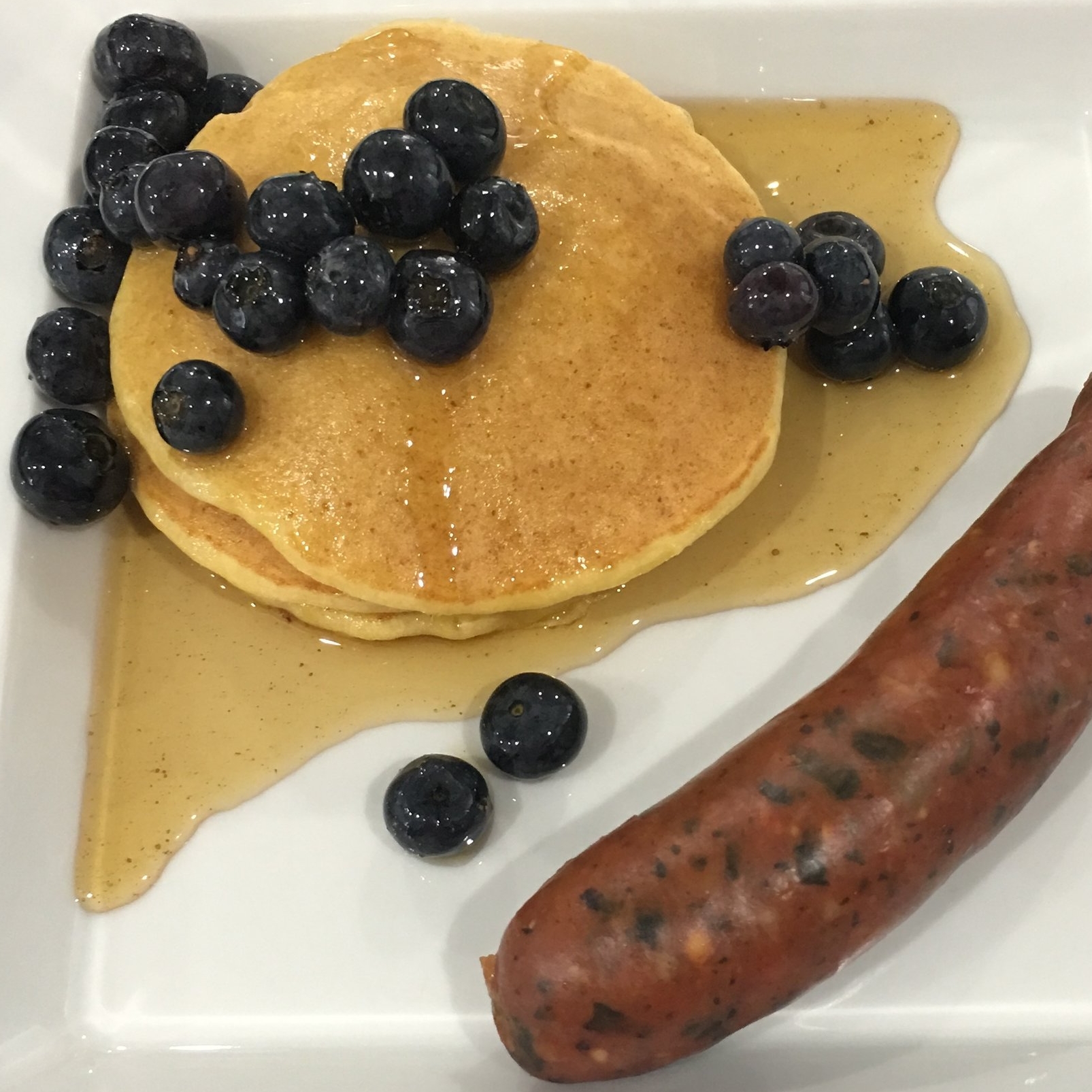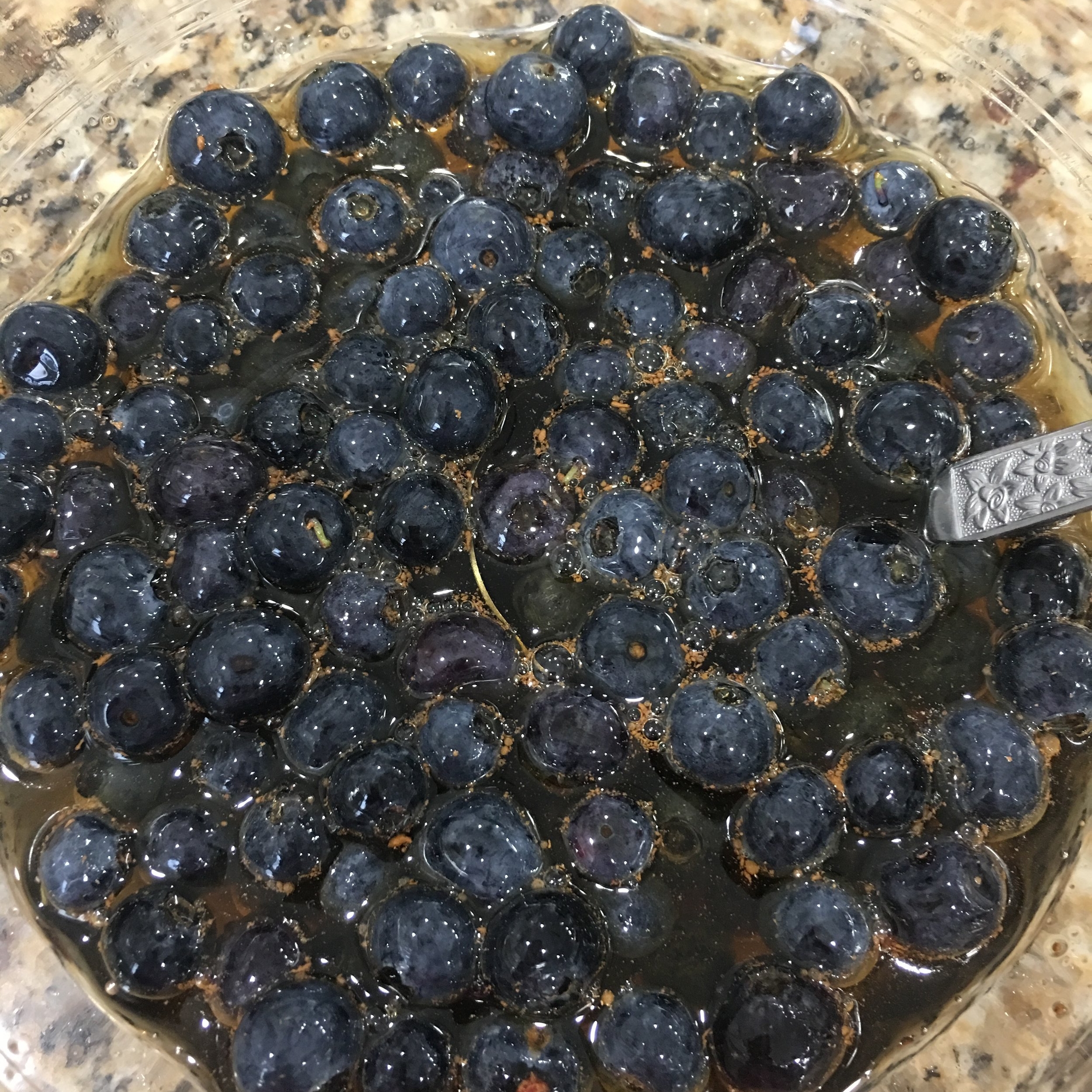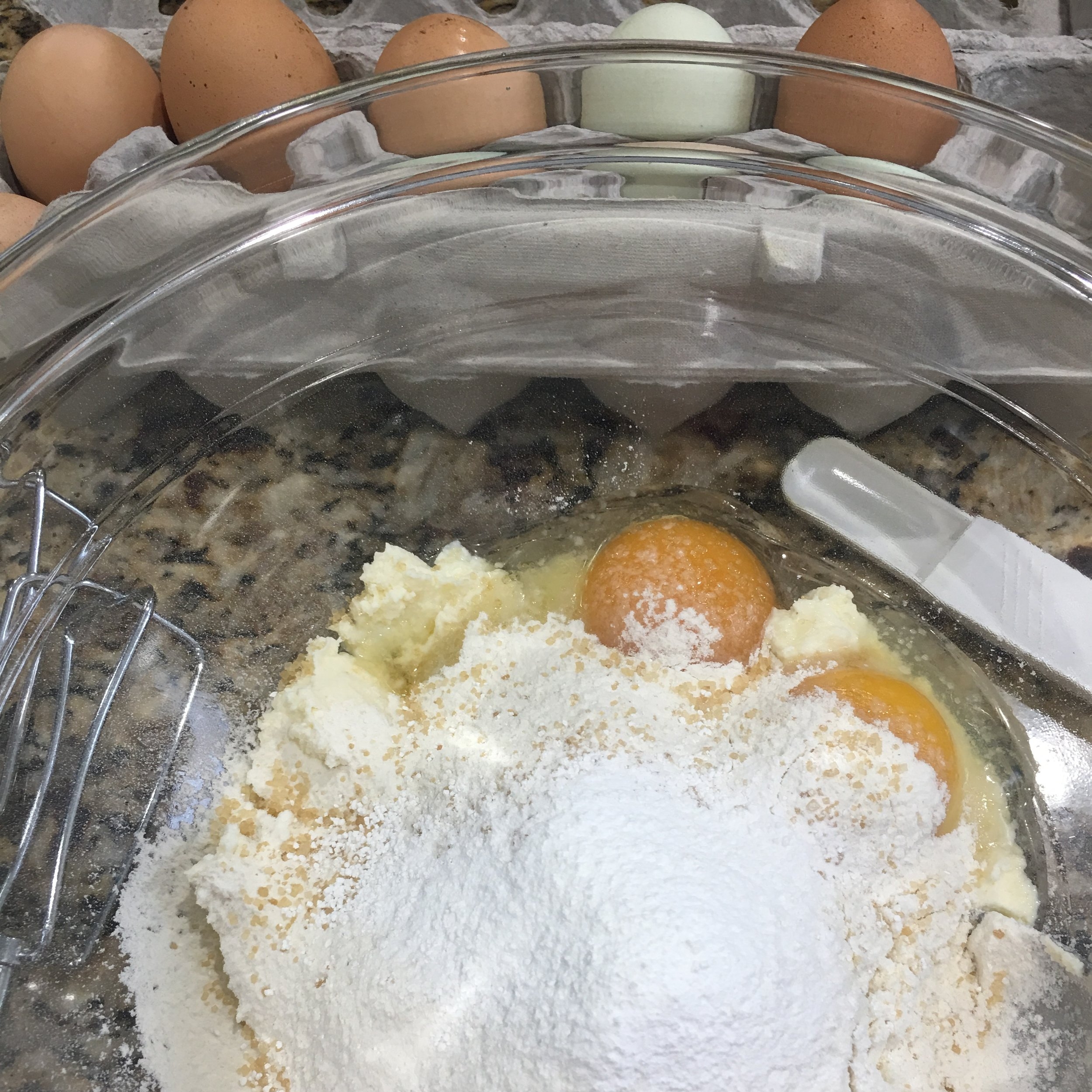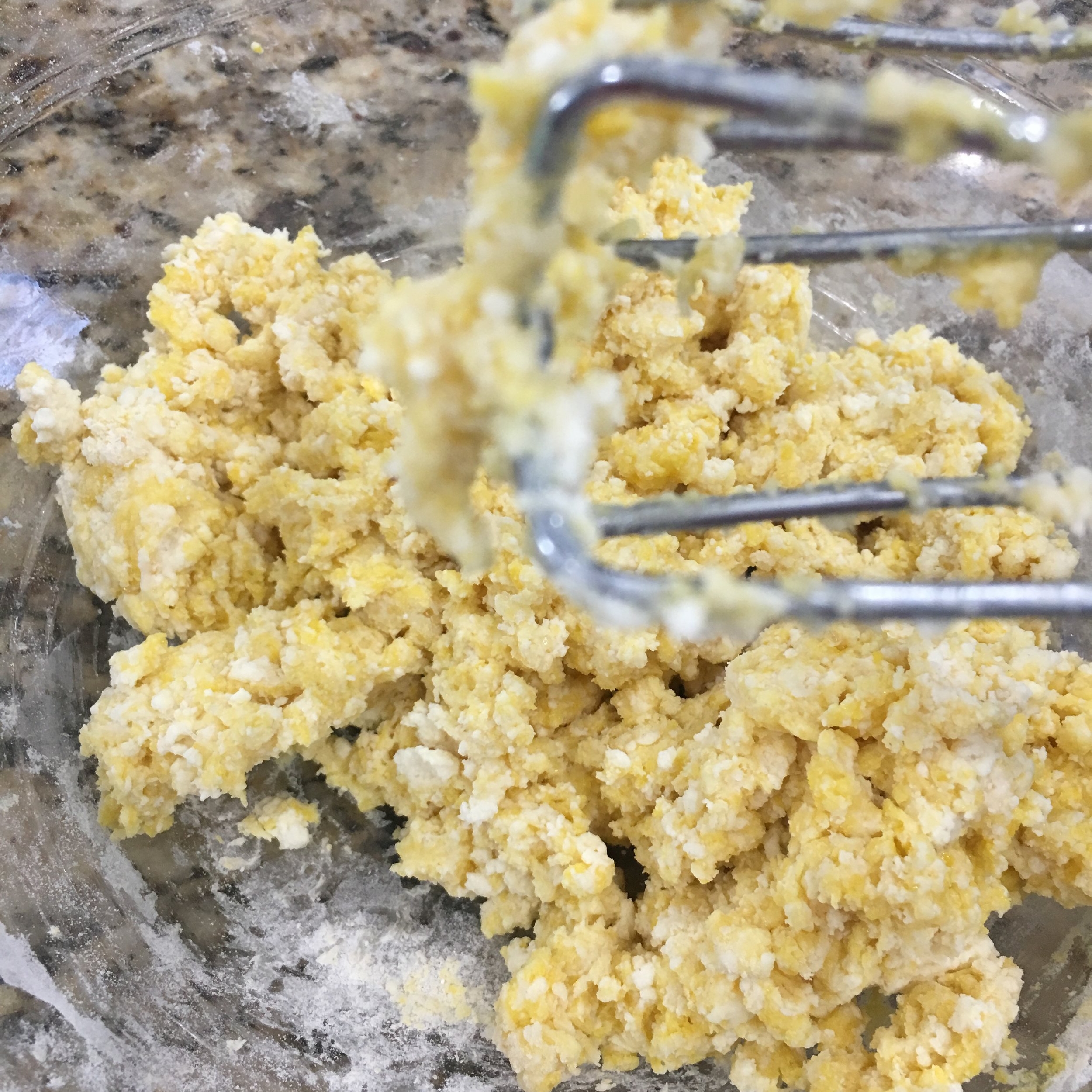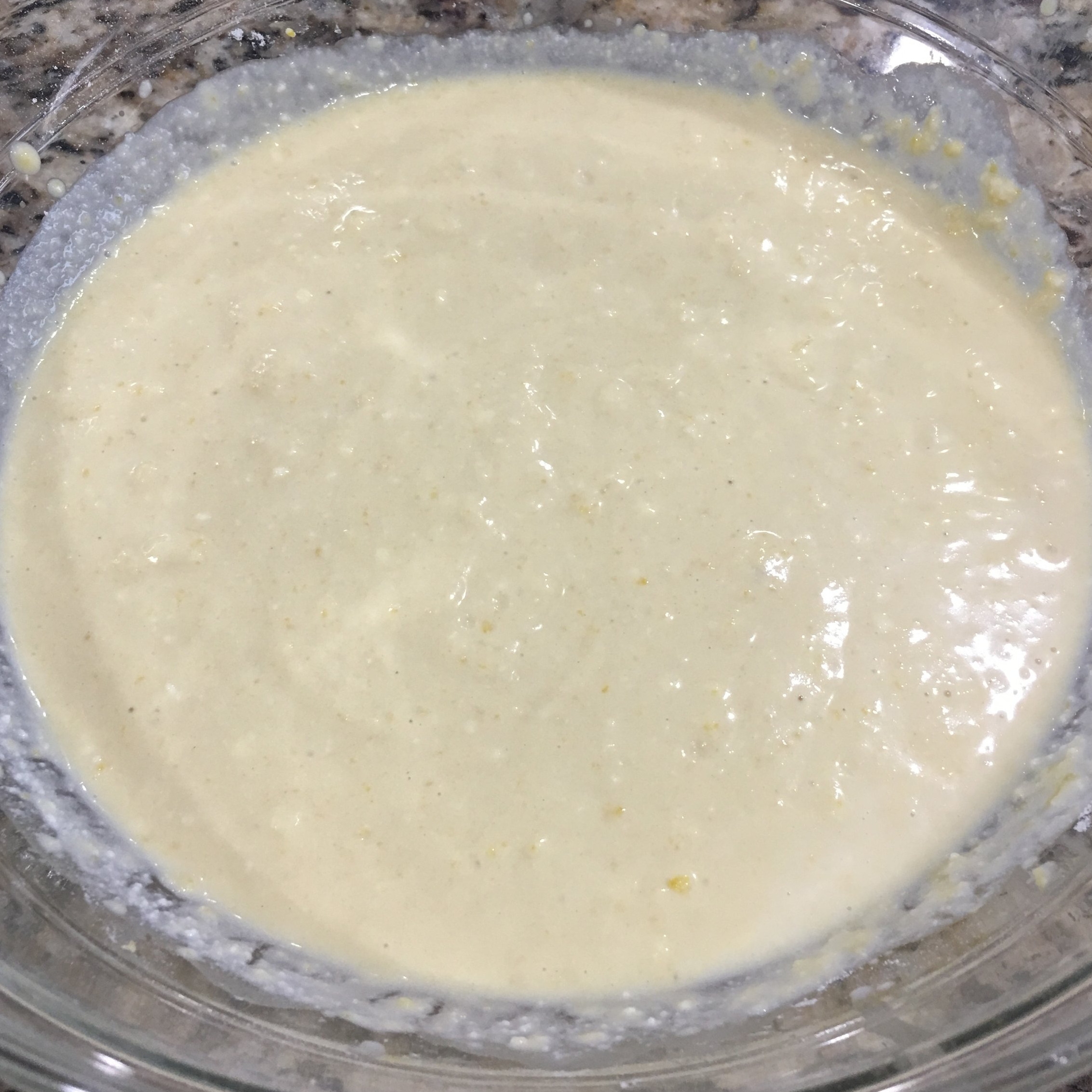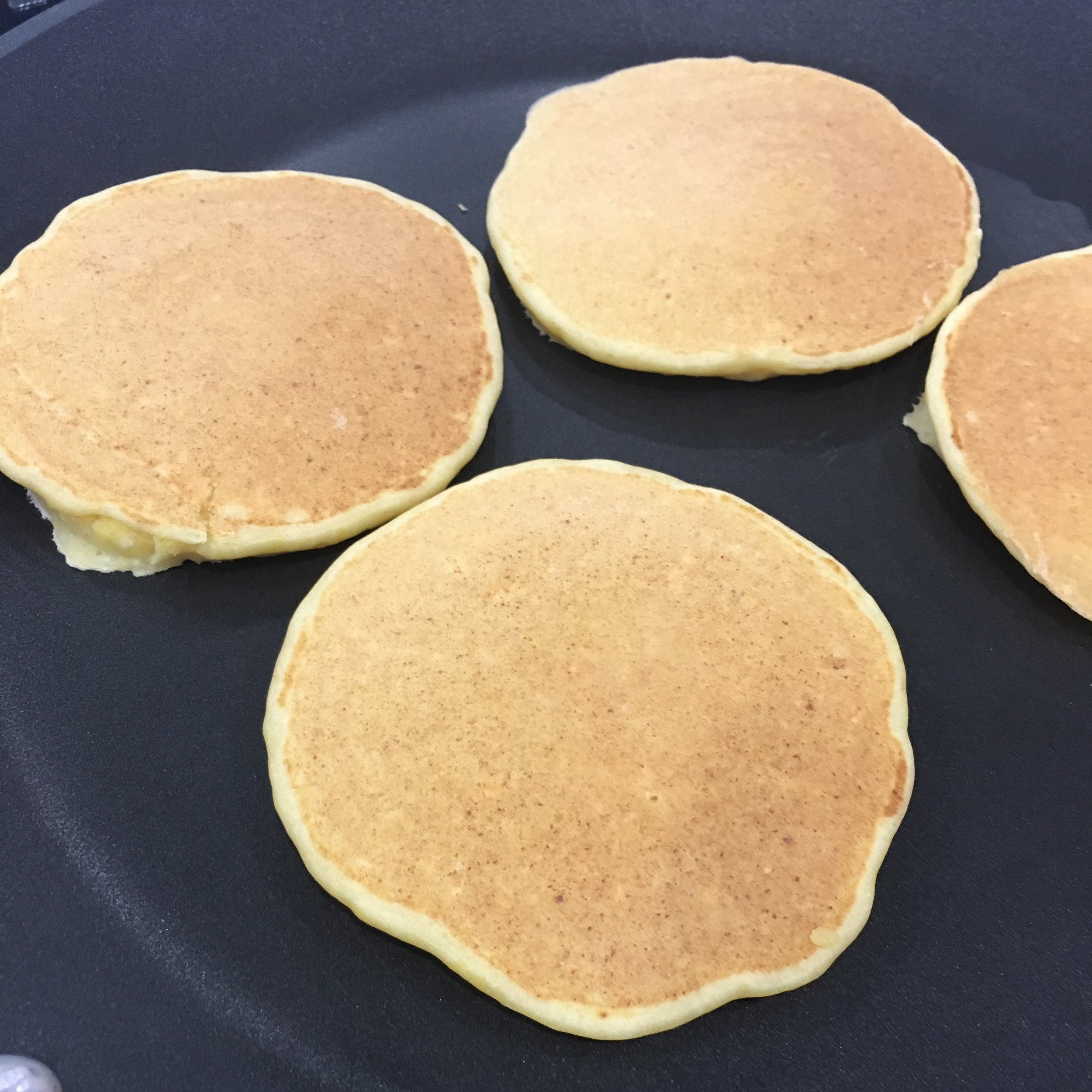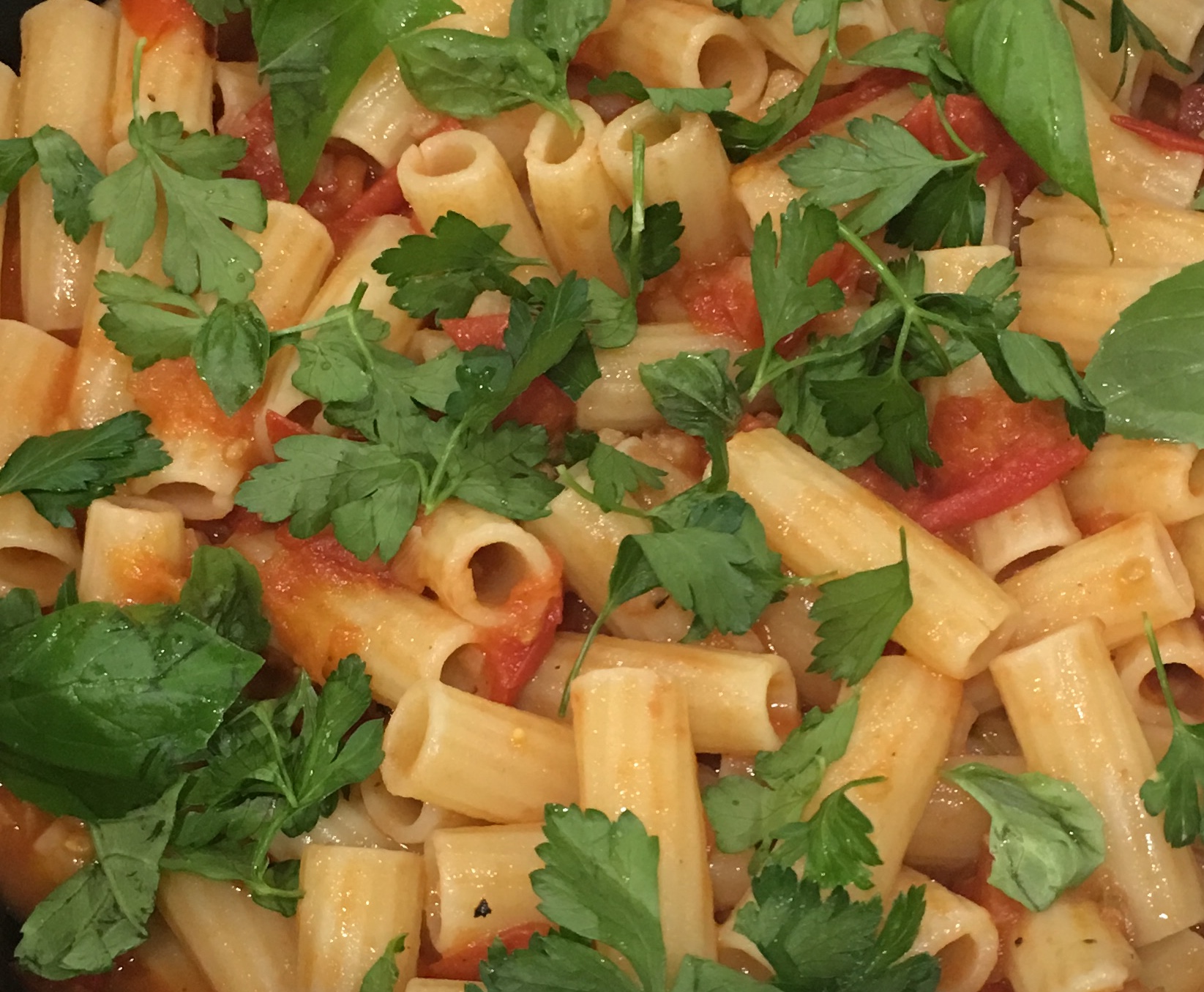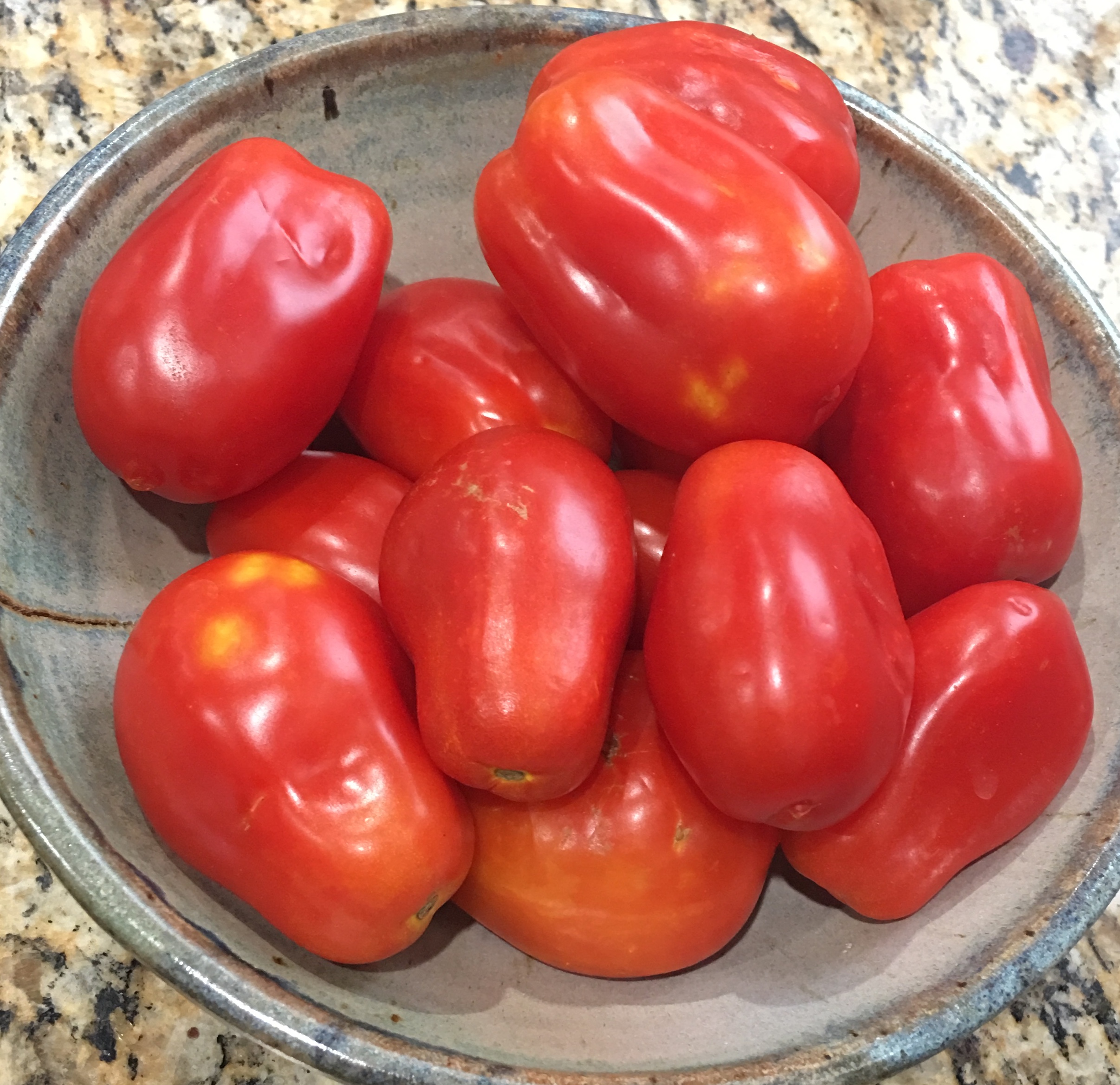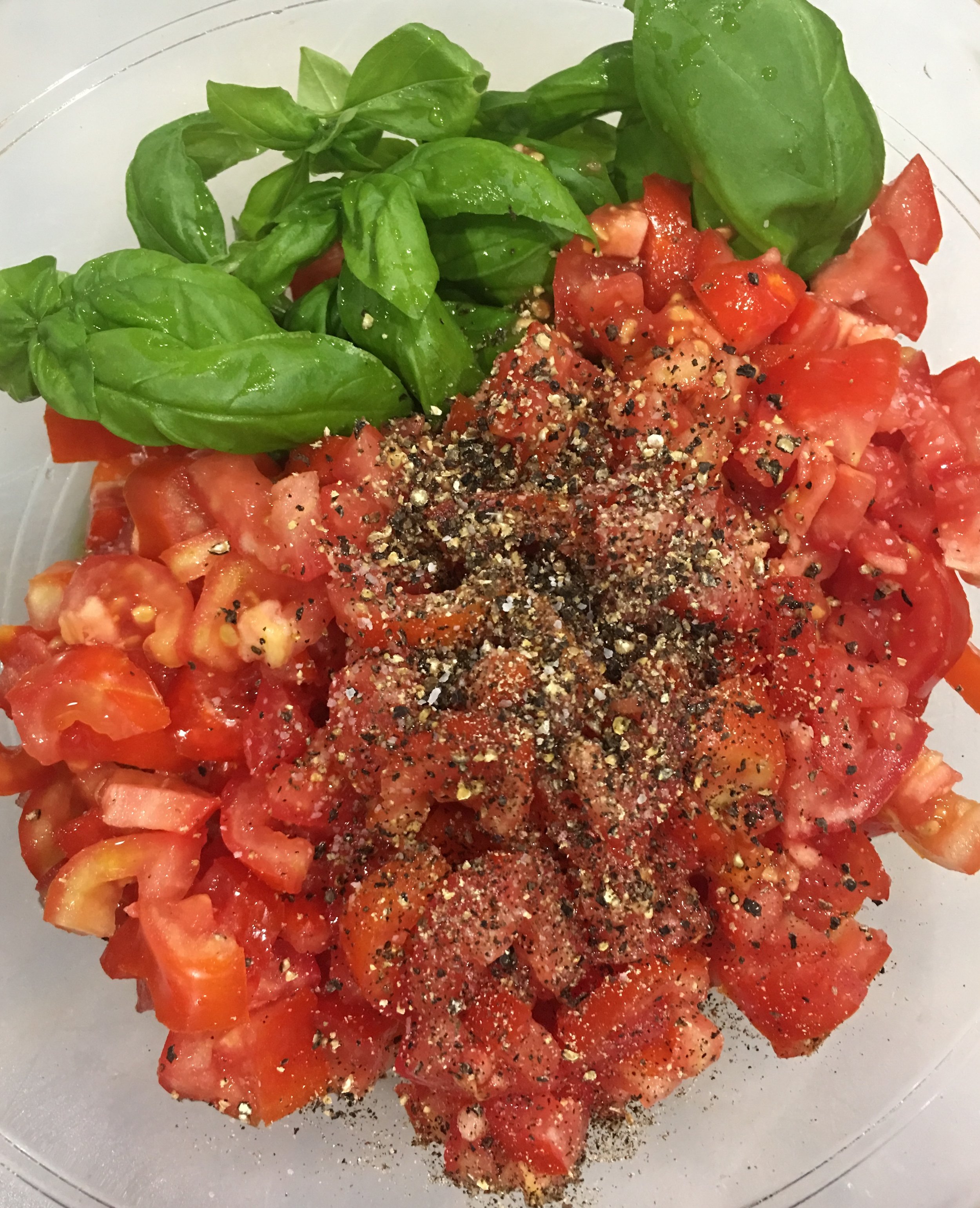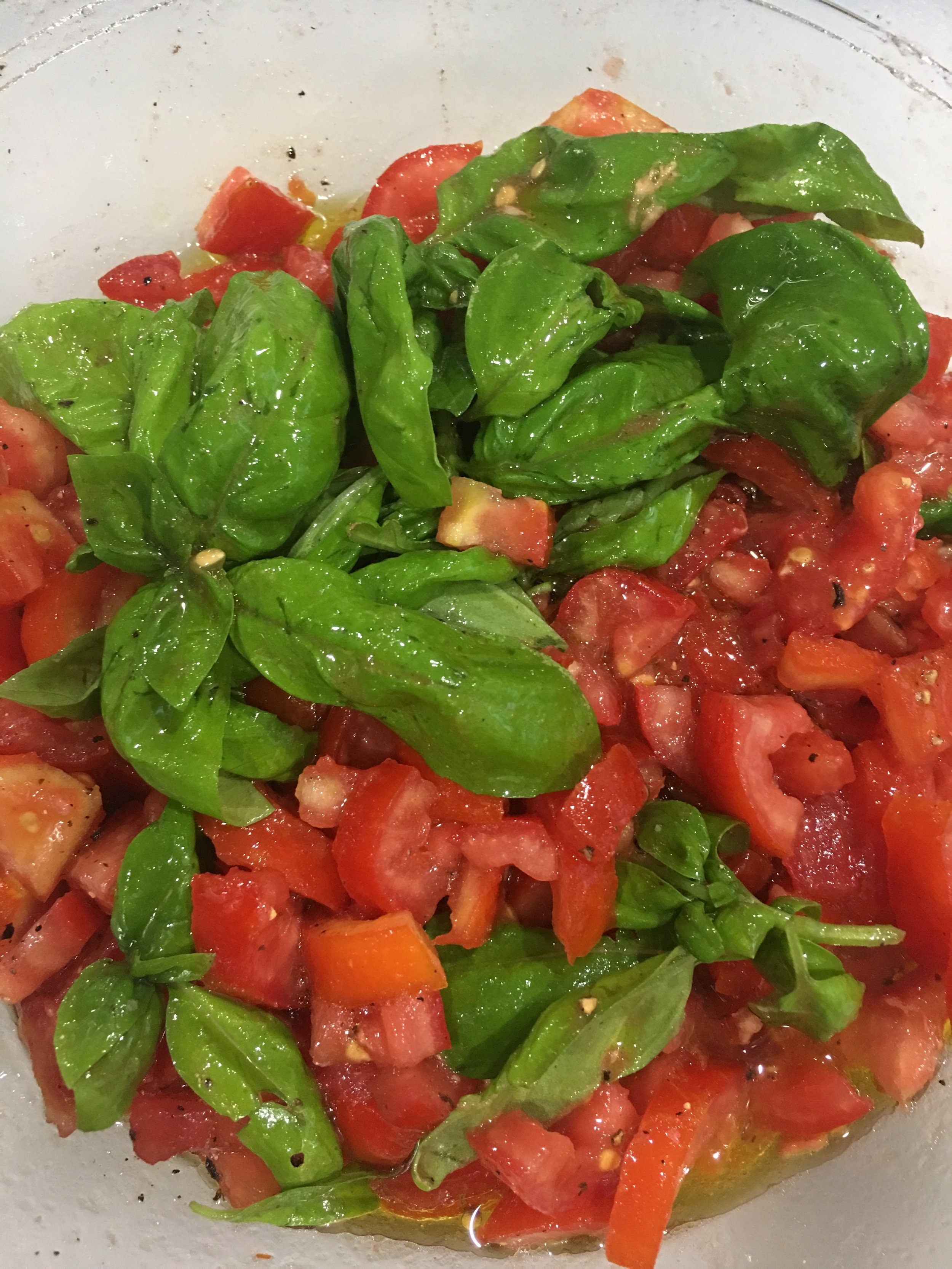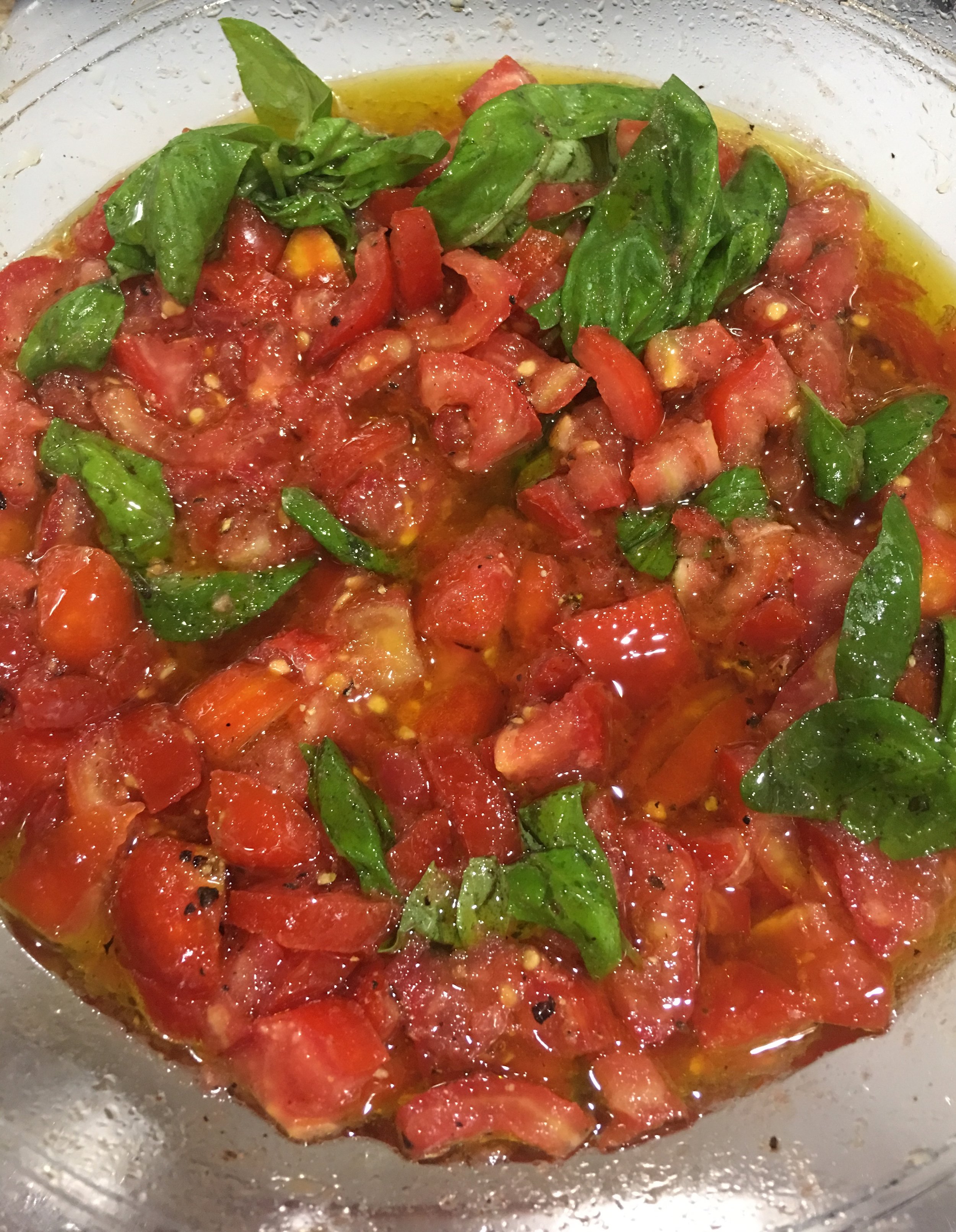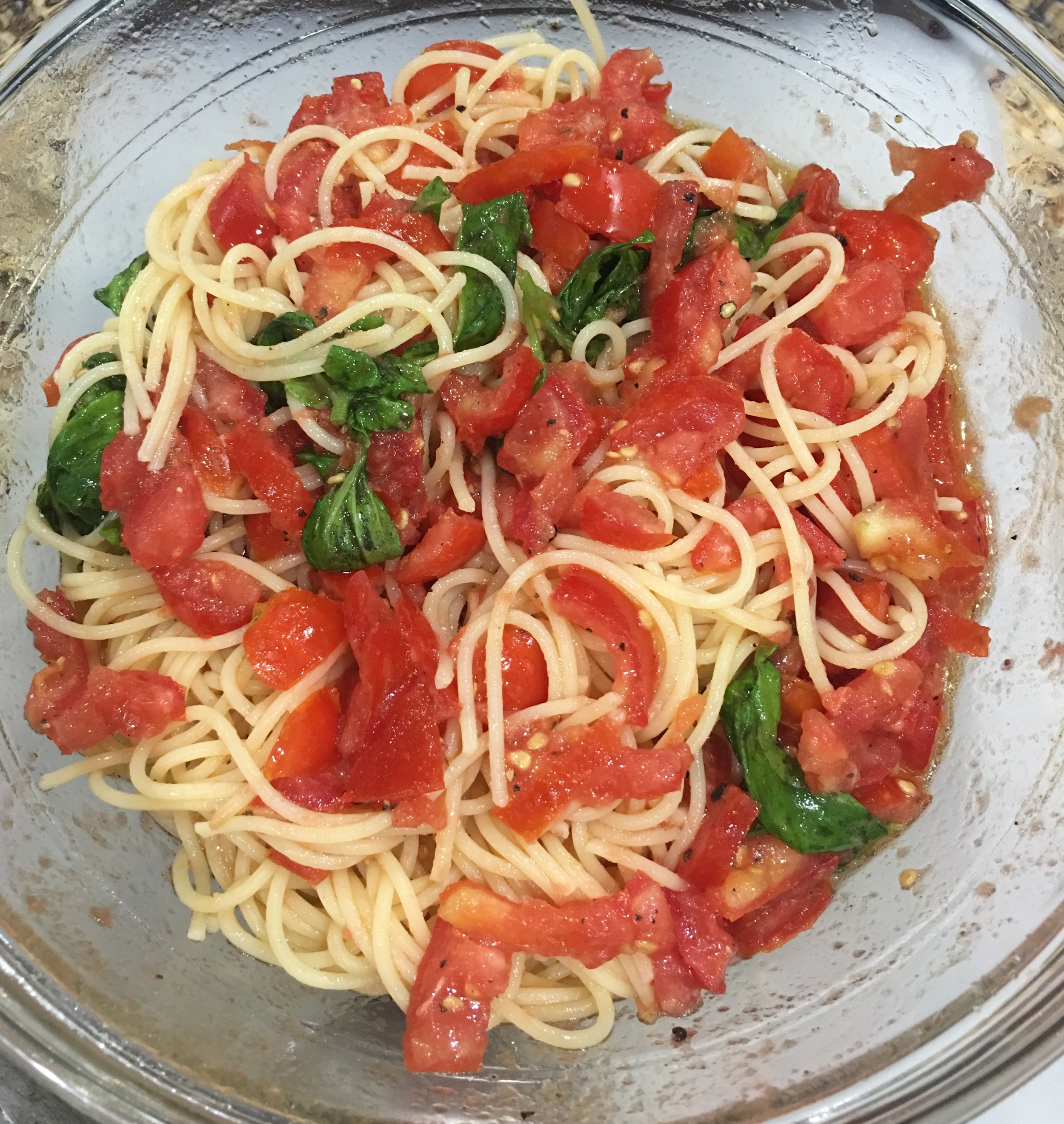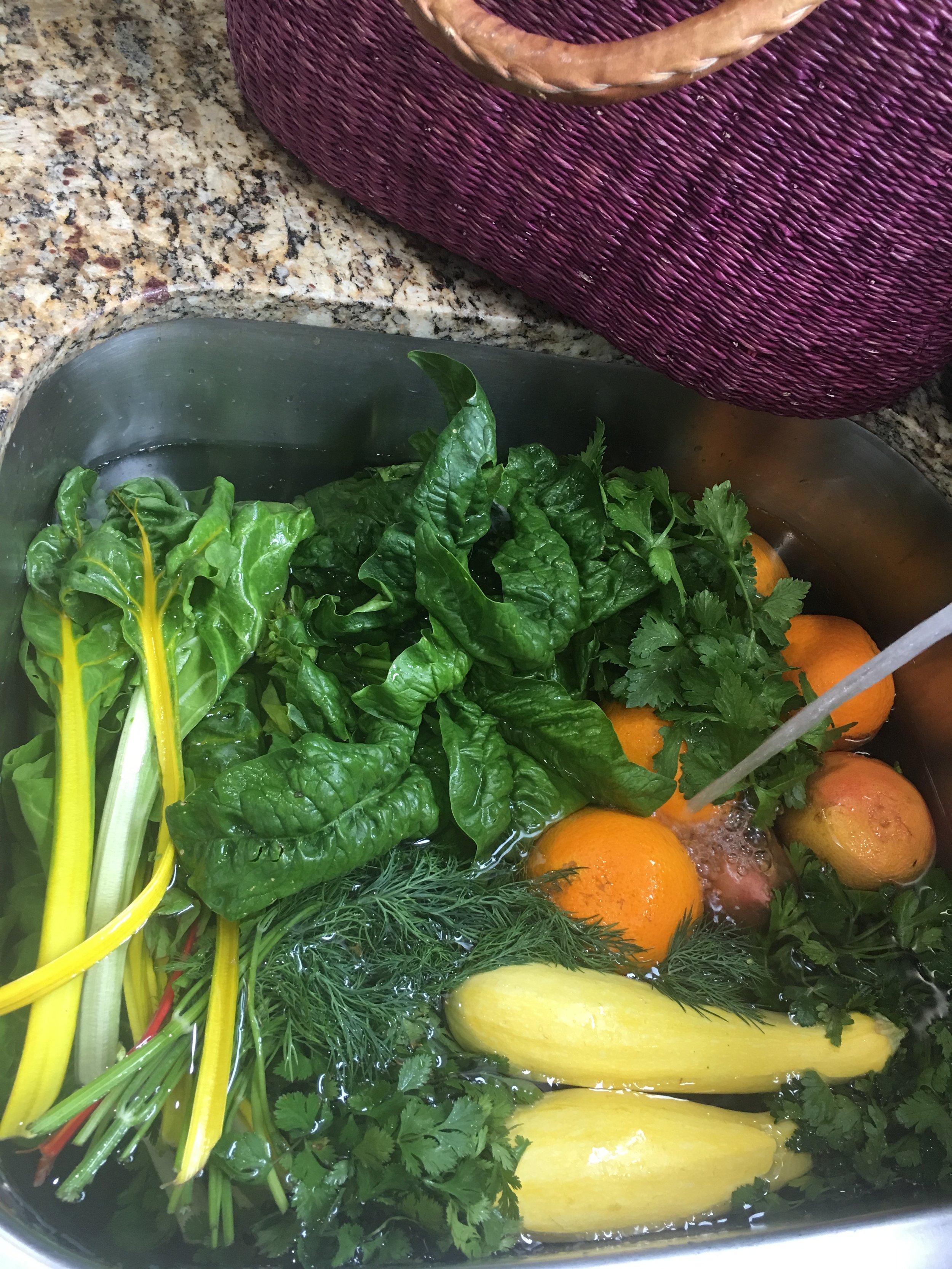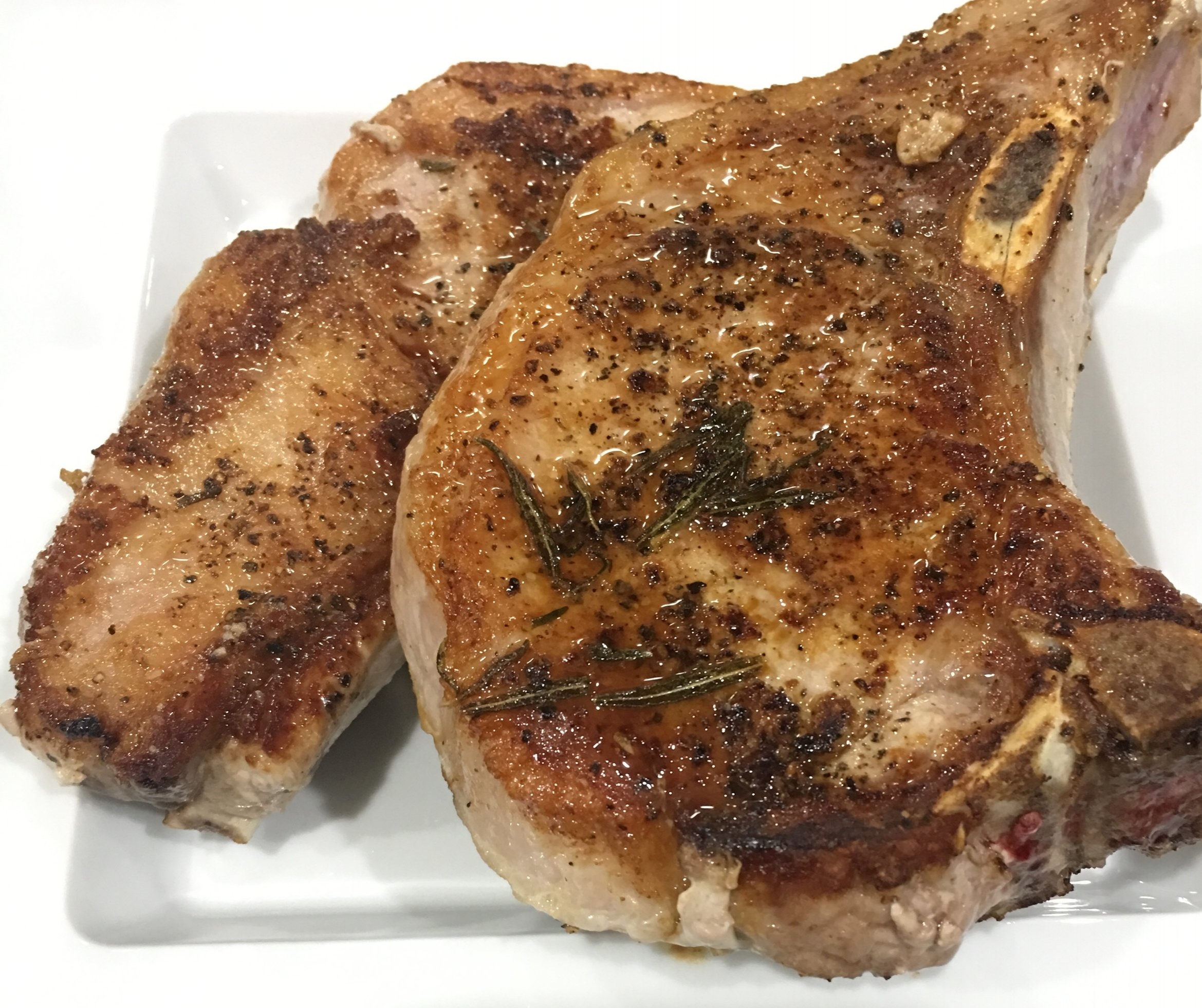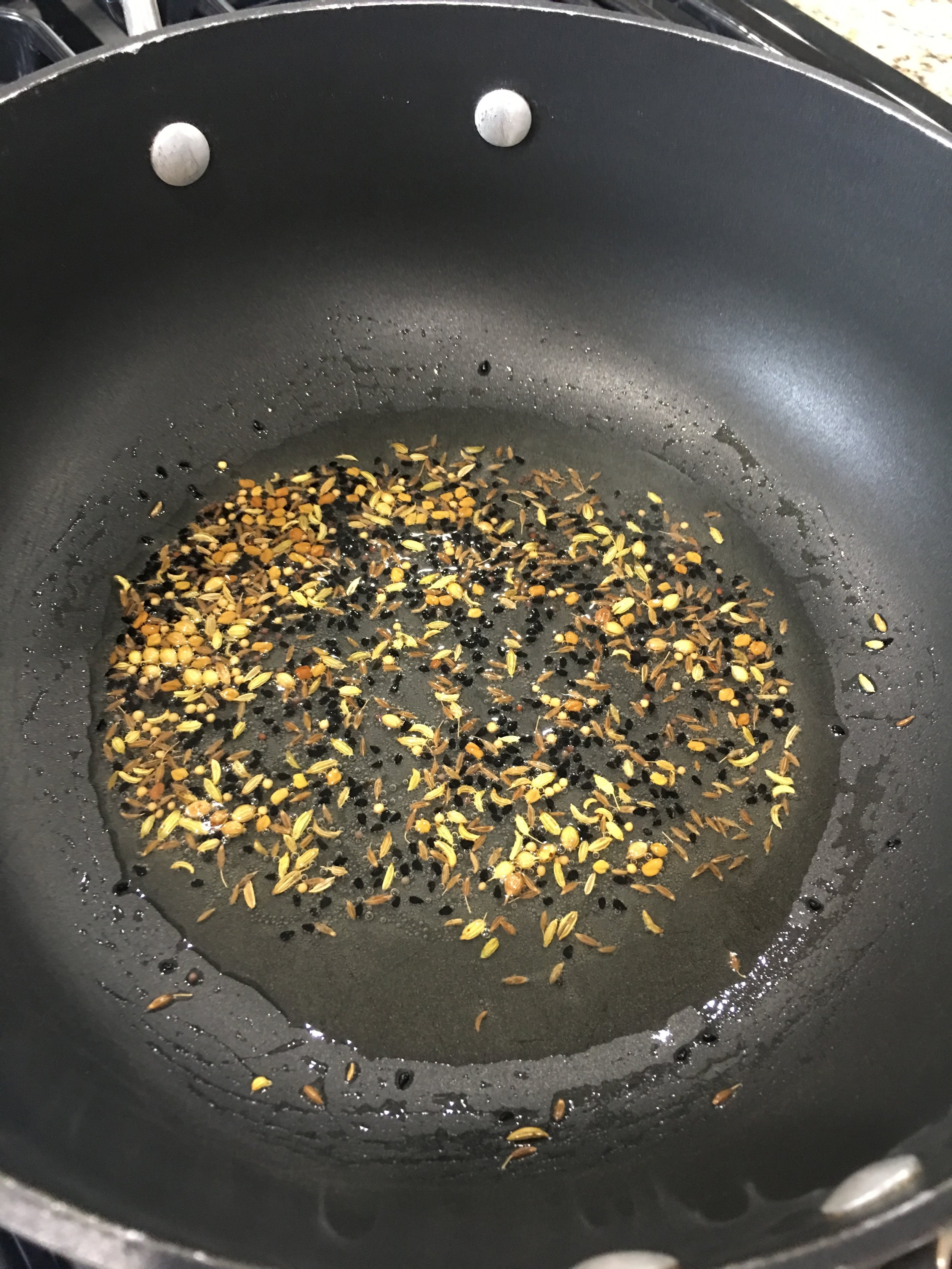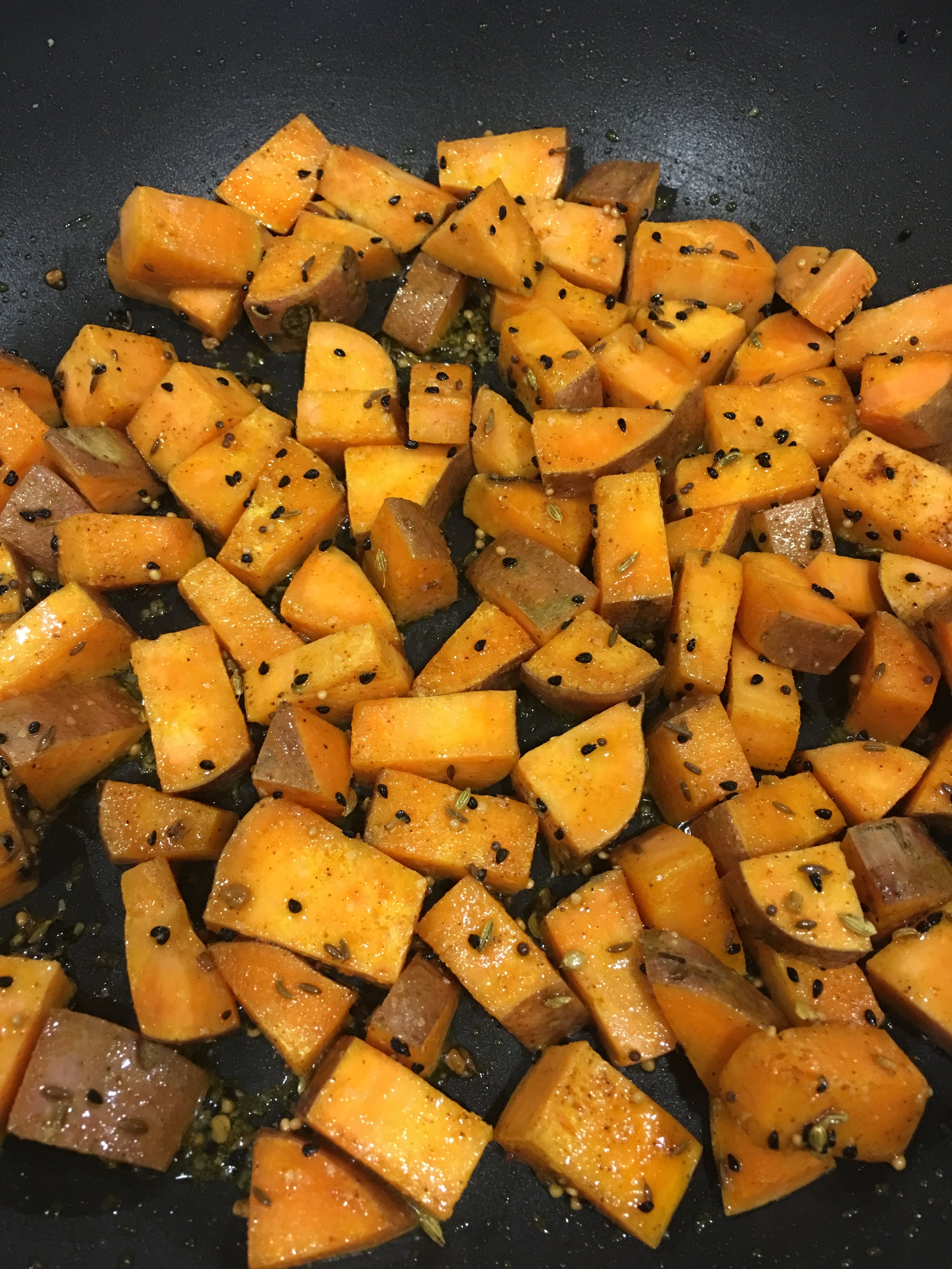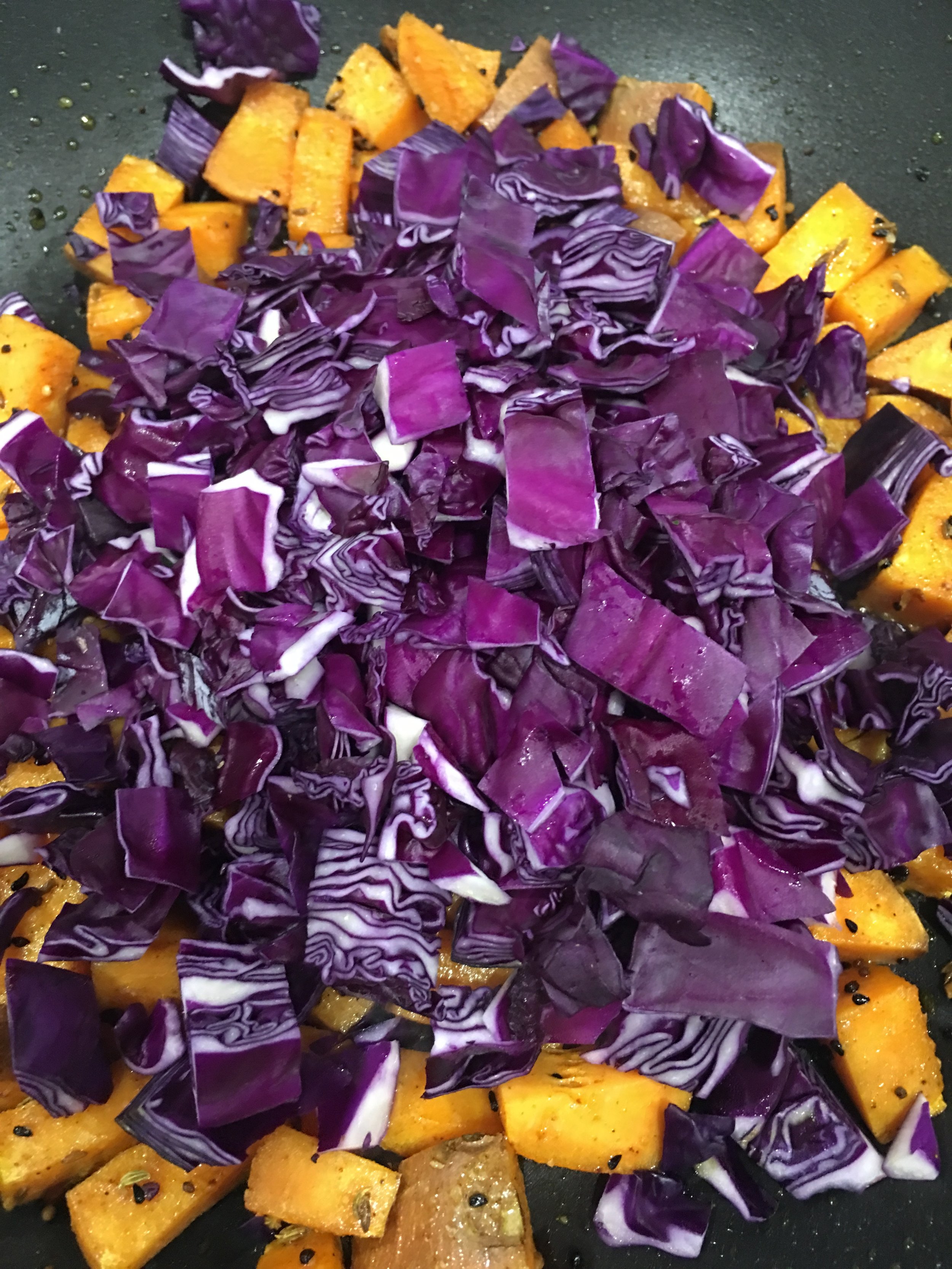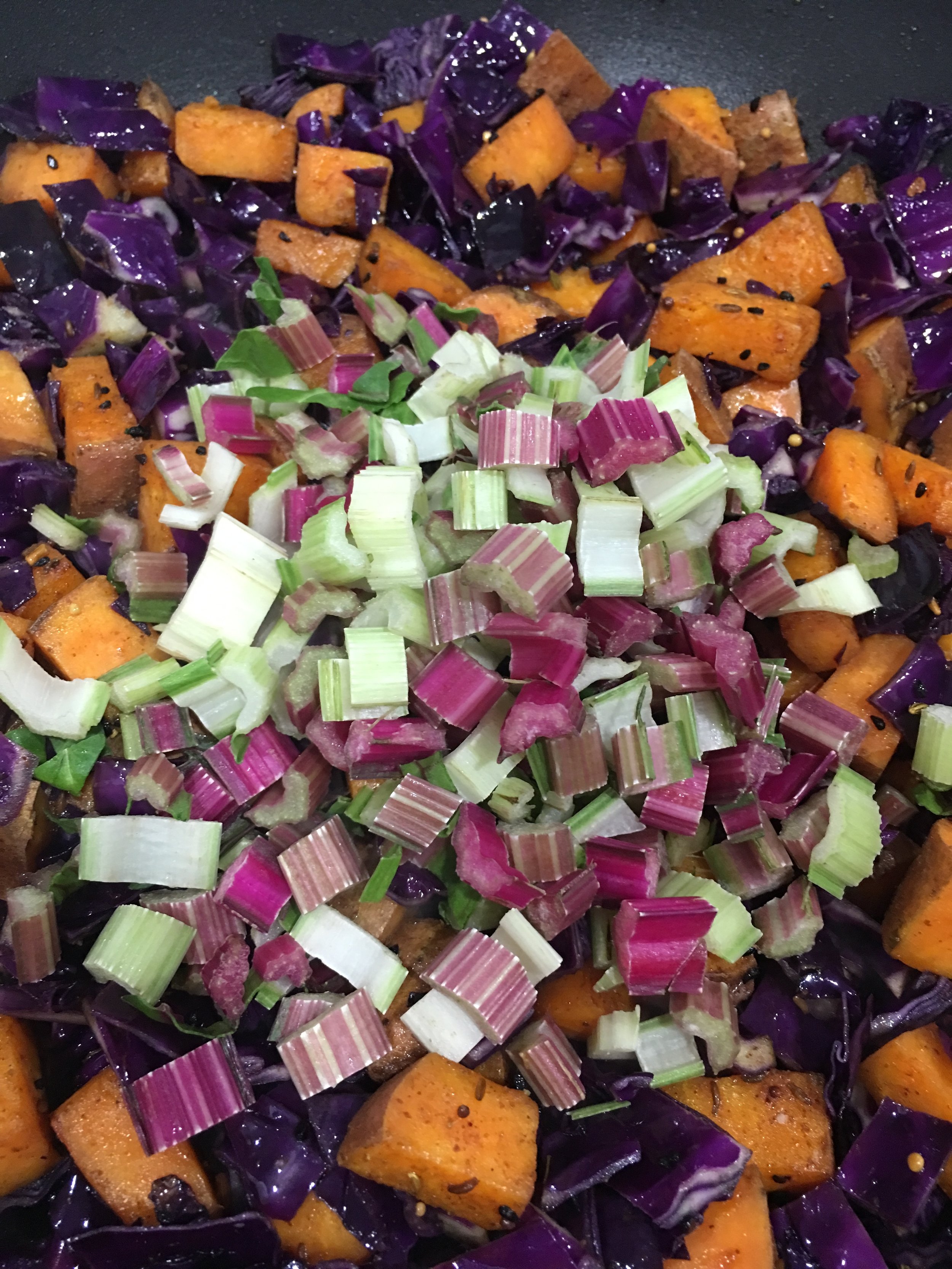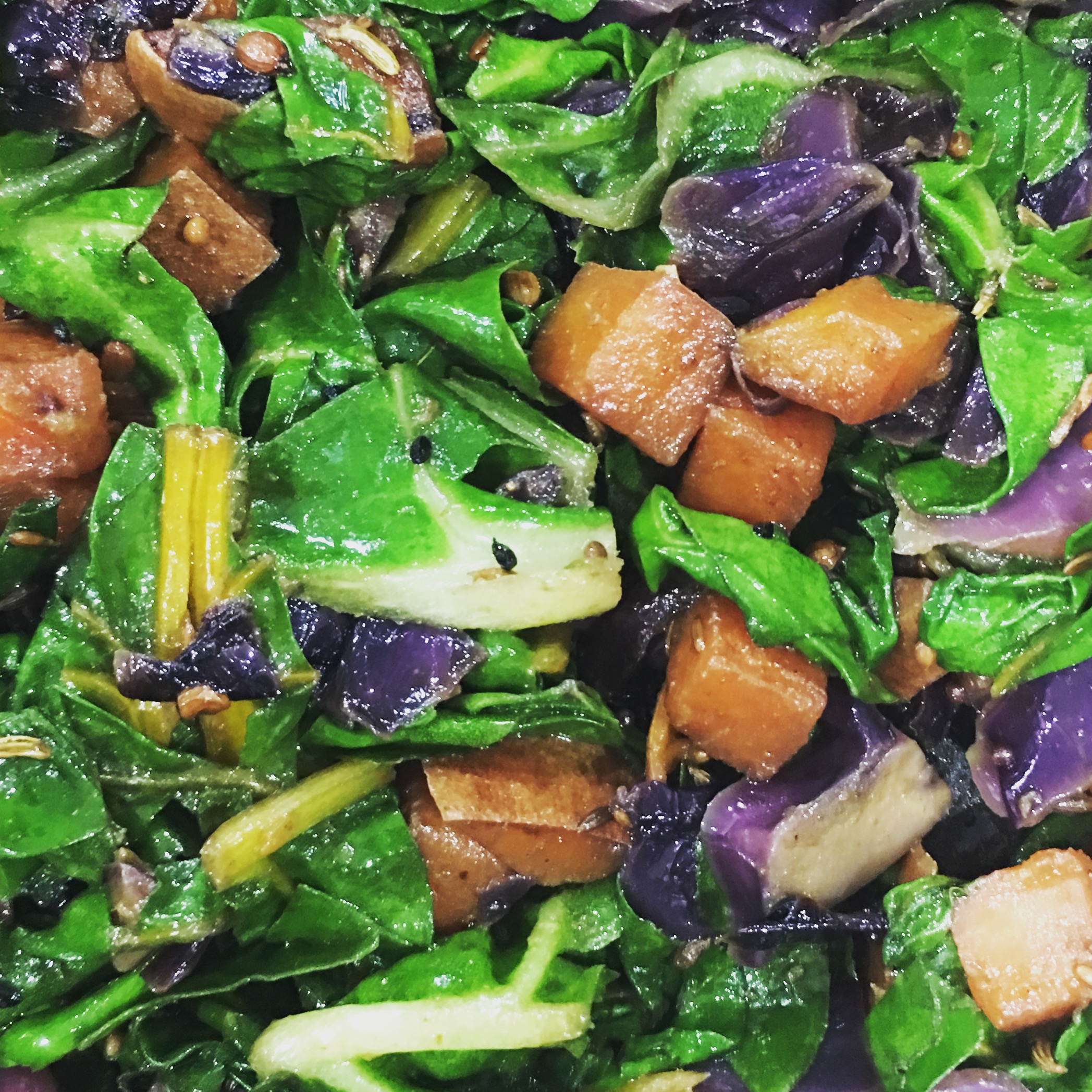According to the latest science, we should be eating fish at least twice a week to prevent stroke, heart disease and dementia. Many people fear cooking fish; overcooking, undercooking and generally stinking up the kitchen. Fish is not just healthy, but can be easy and simple to prepare. This is my easiest fish curry so far.
This recipe works well for for weeknight meals. Braising the fish in a flavorful light broth makes it difficult to overcook and the fish stays moist and firm. Braising also reduces cleanup and odors by avoiding the mess of splattering oil which occurs when sautéing or pan-frying.
The use of powdered spices is inspired by Indian home cooking, as is the light broth. Its not like the creamy dishes found in most Indian restaurants, which are generally not cooked at home. This combination of spices is typical of the state of Bengal, where preparing delicious fish is a highly revered specialty and the pride of all home cooks. It's a lightly spicy curry and you can use only one, or even a half jalapeño if you prefer it mild.
If your fish is frozen, thaw it slowly in the fridge for a day or two before using. If you didn’t plan ahead, thaw in changes of cool water. Keeping the fish cold until cooking reduces the risk of harmful bacterial contamination.
You can easily adapt this recipe to included shellfish or as a vegetarian version.
RECIPE: Fish Curry in a Hurry
INGREDIENTS
- 2 teaspoons extra virgin olive oil
- 1 teaspoon nigella seeds
- 1-2 jalapeños, quartered lengthwise
- 2 teaspoons cumin
- 2 teaspoons coriander
- 1/2 teaspoon turmeric
- 1 teaspoon salt
- 2 Cups water
- 1 Cup halved cherry tomatoes, about 20
- 2 pounds firm white fish ( snapper, redfish, mackerel, etc), cut into 2 oz pieces (about 2 inch)
PROCESS
- Heat the nigella seeds in oil over medium heat until they begin to sizzle.
- Add the spices, jalapeños and salt and sauté for 1-2 minutes.
- Add the water and cherry tomatoes and bring to a boil.
- Add the fish and cook at medium heat until cooked through, about 8 minutes.
- Serve with rice or enjoy on its own.
Makes 4 to 6 servings
